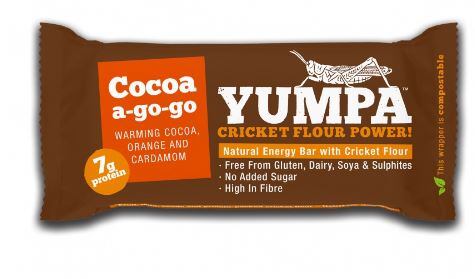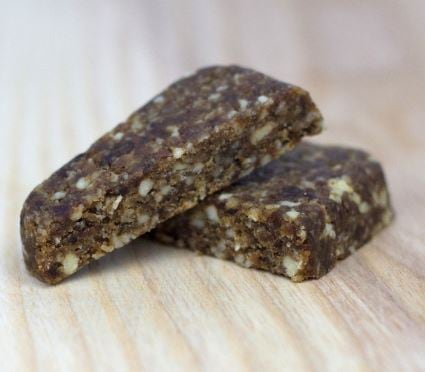“It’s surprising how quickly the perception is changing as the food industry more normalises the use of crickets in their food," the company’s founder, Tony Askins, told us. "I feel people have a more adventurous palette and want something a bit different. That’s where the repeat sales have come.”
“Here at FoodMattersLive there are twelve companies showcasing their insect-derived products. Last year there were only two.”
Preparing crickets for consumers

Yumpa's crickets are fed a diet of vegetables and grains, finely ground and blended with other ingredients, and then cold-pressed to produce its range of gluten-, dairy-, soy-free natural energy bars.
The bars come in three flavours: tangy Thai, cocoa-a-go-go and peanut salt crunch.
This results in a product that contains as much vitamin B12 as salmon, three times as much iron as spinach and more magnesium and zinc than beef.
At 60% complete protein, with all nine amino acids, the cricket flour contributes to the energy bar’s release of slow energy aided by the high fibre content.
Through EU-funded research projects such as PROteINSECT, the European Parliament has vowed to tackle the EU’s protein deficit, saying that action is needed to replace imported protein crops with alternative European sources.

“Cricket flour is relatively easy to produce,” he continued. “Basically, crickets are chilled, blanched, baked and then milled. This minimal process is very popular with consumers.”
Niche? Or ready for mainstream?
Yumpa’s co-founder pointed to the health benefits of protein, emphasising the impending legislation in the UK amongst other countries that are trying to curb consumption of high sugar and fat-heavy foods.
“Protein is king at the moment,” Askins said. “Much of the interest in our Yumpa bars has been the outdoor sports enthusiasts. It provides that energy hit and feelings of satiety.”
Current farming is not sustainable
Askins said that the insect-derived protein alternative was the answer to current farming practices and patterns of consumption that in the long term could not be sustained.

“I think it’s becoming more of an issue with consumers and they’re more aware of how much damage modern agriculture is doing to the environment,” he said.
“Over 50% of greenhouse gases are due to animal agriculture and their by-products. With crickets they produce only 1% of the greenhouse gases than cows do, they use a lot less space and they thrive at high densities.”
As the global population moves towards ten billion by 2050, the global food crisis has accelerated the need to offer consumers alternative protein sources.
“The conversion of feed for protein is also far superior for crickets,” Askins said. “A kilo of cow feed produces 40 grams of edible weight. A kilo of feed given to crickets produces 470 grams of edible weight.”
Crickets are also a main source of protein for MicroNutris, Crobar and French-based food maker Jiminis.
